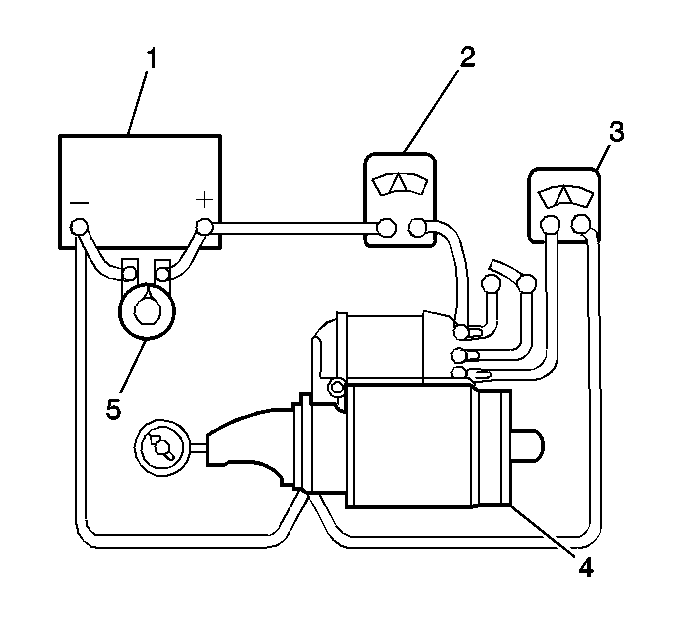For 1990-2009 cars only
- With the carbon pile (5) OFF, make the connections (Battery (1), Ammeter (2), voltmeter (3), starter motor (4), carbon pile (5)).
- Close the switch, adjust the carbon pile in order to obtain 10 volts. Compare the RPM, current and voltage readings with the specifications. Refer to Starter Motor Usage .
- Disconnect the leads only with the switch open.
- Use the following information with the test results:

| 4.1. | Rated current draw and no-load speed indicates normal starter motor condition. |
| 4.2. | Low free speed and high current draw indicates the following conditions: |
| • | Too much friction. This can be caused by tight, dirty or worn bearings, or bent armature shaft allowing armature to drag. |
| • | Shorted armature. This can be further checked with a growler after disassembly. |
| • | Grounded armature or fields. Check further after disassembly. |
| 4.3. | Failure to operate with high current draw indicates the following conditions: |
| • | Direct ground in terminal or fields. |
| • | Frozen bearings (this can be determined by hand turning the armature). |
| 4.4. | Failure to operate with no current draw indicates the following conditions: |
| • | Open field circuit. After disassembly inspect the internal connections and trace the circuit with a test lamp. |
| • | Open armature coils. Inspect the commutator for badly burned after disassembly. |
| • | Broken brush springs, worn brushes, high insulation between commutator bars or other causes which would prevent good contact between brushes and commutator. |
| 4.5. | Low no-load speed and low current draw indicates the following conditions: |
| • | High internal resistance due to poor connections |
| • | Defective leads |
| • | Dirty commutator and causes listed above in step 4.4. |
| 4.6. | High speed and high current draw usually indicate shorter fields. If shorted fields are suspected, replace the field coil. Check for shorted armature, using a growler. |
